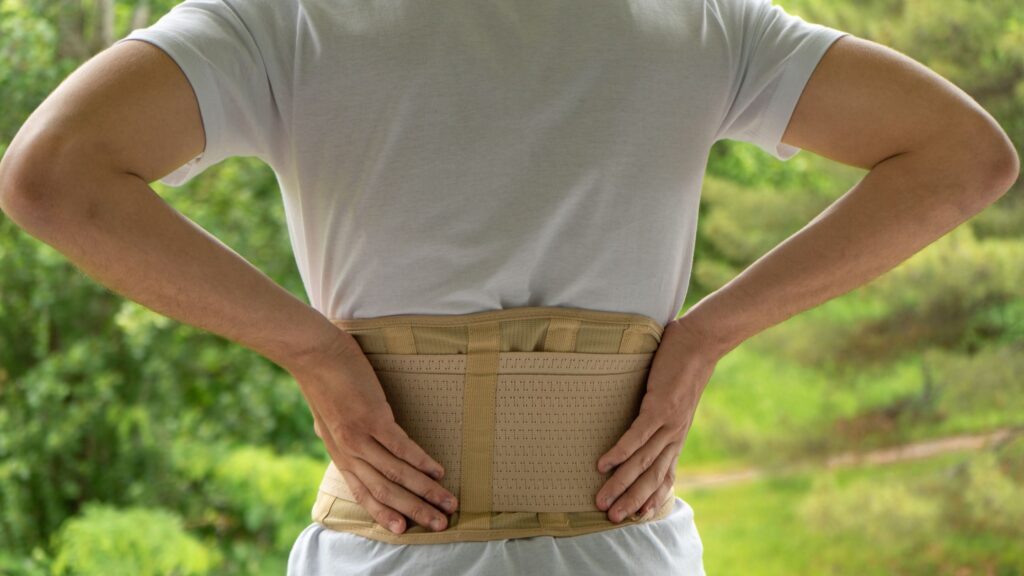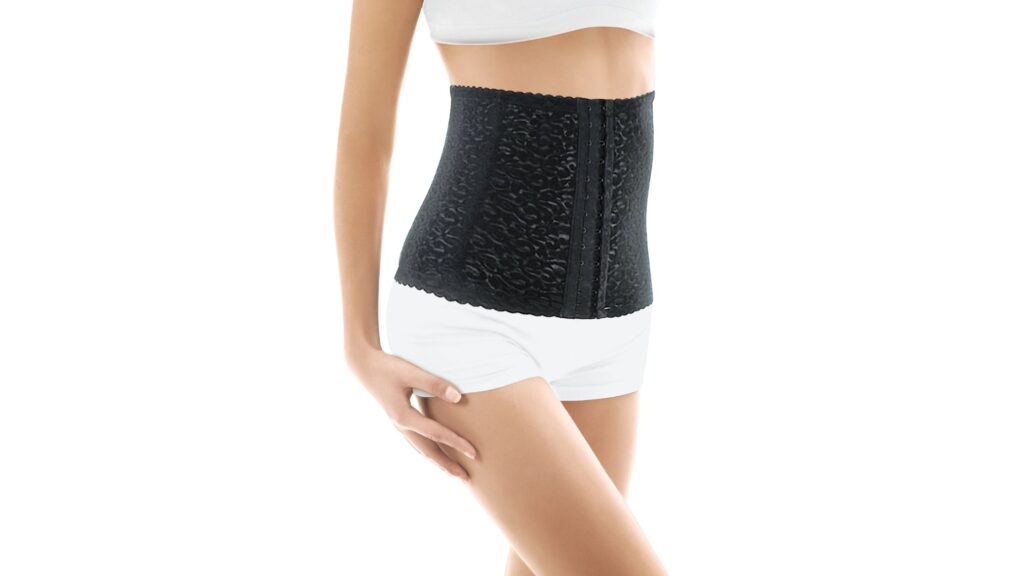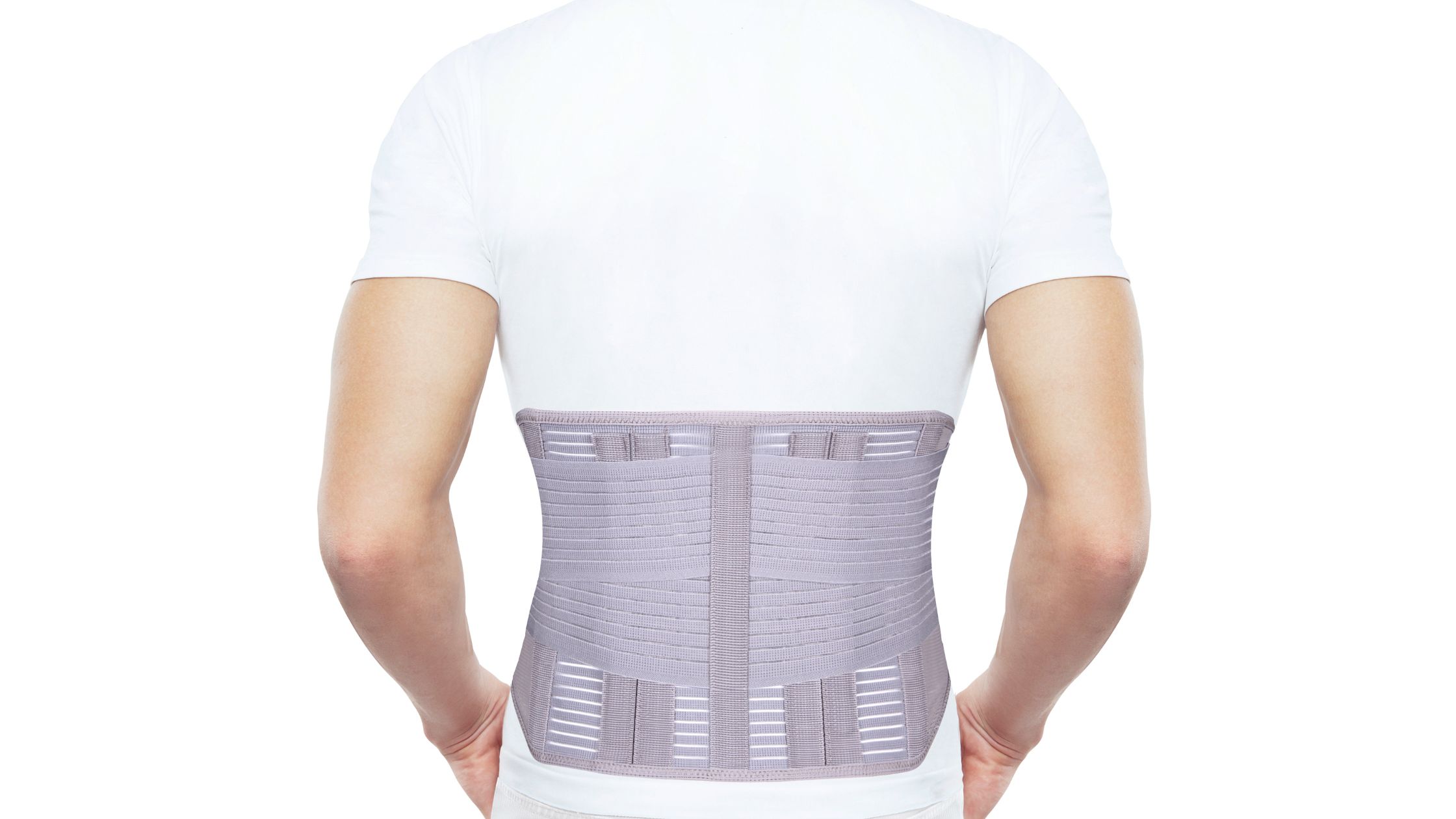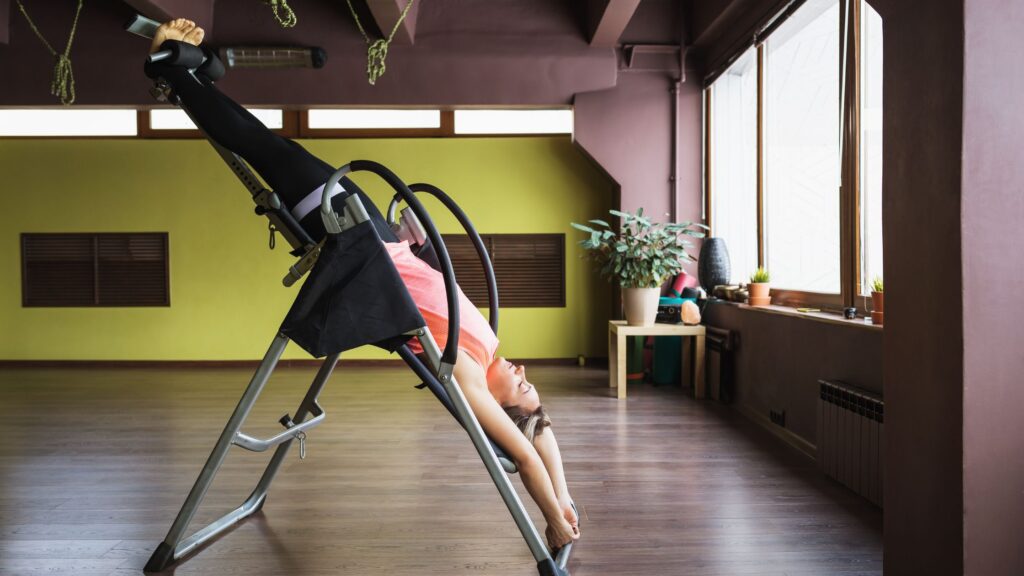Lower back support is the key to maintaining proper posture and preventing discomfort. Whether you suffer from spondylolisthesis, struggle with lifting heavy objects, or simply want to improve your daily activities, understanding the significance of back support is crucial.
Back supports, such as lumbar support belts and breathable back pads, provide targeted compression and stability to the lower back area. By offering optimal lumbar support, these aids alleviate strain on the spine and promote a healthier posture. With improved spinal alignment, you can bid farewell to those pesky aches that hinder your productivity.
Importance of Back Braces for Lower Back Pain Relief
Back braces, also known as support braces, are a valuable tool in managing lower back pain. They offer effective pain relief by providing stability and reducing strain on the lower back.
Effective Pain Relief and Stability
One of the primary benefits of using a back brace is its ability to alleviate pain. By providing support to the lower back, these braces help distribute weight evenly and reduce pressure on the affected area. This can significantly relieve discomfort caused by conditions such as muscle strains, herniated discs, or sciatica.
Moreover, wearing a back brace enhances stability in the lower back region. It acts as an external support system that reinforces proper alignment and posture. This added stability minimizes excessive movements that could potentially worsen existing injuries or lead to new ones.
Promotes Healing and Prevents Further Injury
Back braces not only provide immediate relief but also promote healing over time. By immobilizing the affected area, they allow injured muscles, ligaments, or discs to rest and recover more effectively. This can speed up the healing process and reduce inflammation.
Wearing a back brace can prevent further injury by limiting certain movements that may exacerbate existing conditions. For example, if you have a herniated disc, bending forward excessively can put additional strain on it. A well-fitted brace restricts such movements and helps protect your spine from further damage.
Improved Mobility with Support Braces
Contrary to popular belief, using a back brace does not hinder mobility; instead, it improves it. These braces are designed to provide targeted support while allowing for comfortable movement during daily activities.
For individuals experiencing chronic lower back pain or recovering from an injury/surgery, wearing a support brace can restore confidence in movement. The added stability gives them peace of mind knowing that their lower back is protected, enabling them to engage in physical activities with reduced pain and discomfort.

Types of Back Braces for Lower Back Support
Back pain can be debilitating, affecting your daily activities and overall quality of life. Fortunately, there are various types of back braces available to provide the much-needed support and relief for your lower back. Let’s explore some of the most common options:
Lumbar Belts
Lumbar belts are a popular choice for individuals seeking targeted support for their lower back. These adjustable belts wrap around the waist, providing compression and stability to the lumbar region. They are particularly beneficial for people who engage in heavy lifting or have jobs that require prolonged periods of sitting or standing.
- Lumbar belts offer a snug fit, ensuring maximum support while allowing freedom of movement.
- They help alleviate muscle strain by reducing pressure on the lower back.
- Some lumbar belts come with additional features like heat therapy or built-in ice packs to further aid in pain relief.
Corsets
Corsets are another type of back brace that focuses on supporting the lower back area. Unlike lumbar belts, corsets extend higher up the spine and provide more comprehensive coverage. They are typically made from flexible materials like elastic or neoprene, offering both support and comfort.
- Corsets distribute pressure evenly across the entire lower back, reducing strain on specific areas.
- They can help improve posture by gently pulling the shoulders back and aligning the spine.
- Corsets often have adjustable straps or closures to customize the level of compression and fit.

Full-back Supports
For those requiring more extensive support, full-back supports are an excellent option. These braces cover not only the lower back but also provide reinforcement to the mid-back and upper spine regions. Full-back supports are commonly used by individuals recovering from spinal surgeries or experiencing severe chronic conditions.
- Full-back supports offer comprehensive stabilization for all areas of the spine.
- They promote proper alignment, reducing stress on surrounding muscles and ligaments.
- Some full-back supports come with rigid inserts or metal stays for added support and immobilization.
Finding the right back brace depends on your specific needs and conditions. Consider consulting with a healthcare professional to determine the most suitable type of back brace for you. Remember, these braces are not meant to be a long-term solution but rather a tool to aid in recovery and provide temporary relief.
When to Consider Using a Back Brace for Lower Back Pain
Knowing when to use a back brace can help alleviate discomfort during various activities or situations. Certain factors such as heavy lifting or prolonged sitting may indicate the need for additional support. Understand the circumstances where using a back brace can be beneficial in managing lower back pain.
Using a back brace is particularly useful for individuals with scoliosis, a condition characterized by an abnormal curvature of the spine. Scoliosis can cause chronic lower back pain, and wearing a back brace can provide much-needed support and stability to the affected area. The brace helps maintain proper spinal alignment, reducing strain on the muscles and relieving pain.
Another situation that warrants the use of a back brace is when engaging in activities that involve heavy lifting. Whether you’re moving furniture or participating in weightlifting exercises, wearing a back brace can significantly reduce the risk of injury. The brace offers extra support to your lower back, preventing excessive strain and ensuring proper posture while lifting.
Prolonged sitting is notorious for causing lower back pain, especially if you have poor posture or an underlying condition like sciatica. In such cases, using a back brace can provide relief by promoting better posture and distributing pressure evenly across your spine. By maintaining proper alignment, the brace helps alleviate discomfort during long periods of sitting.
Individuals recovering from lower back injuries or surgeries can also benefit from using a supportive brace. After sustaining an injury or undergoing surgery, it’s crucial to protect your lower back during the healing process. A well-fitted back brace provides stability and restricts movement in order to facilitate recovery and prevent further damage.
People who frequently engage in physically demanding activities may find wearing a back brace helpful in preventing injuries. Whether you’re involved in sports like football or regularly perform manual labor tasks that strain your lower back, using a supportive brace can minimize the risk of sprains, strains, and other muscular injuries.
Benefits of Waist and Back Braces for Lower Back Pain Relief
Waist and back braces are essential tools that provide targeted compression, effectively reducing pressure on the spine. These braces offer a multitude of benefits, including increased stability, improved posture, and enhanced comfort during movement. By understanding how waist and back braces contribute to long-term pain relief and better quality of life, individuals suffering from lower back pain can find much-needed support.
Targeted Compression for Spinal Pressure Reduction
One of the primary advantages of waist and back braces is their ability to deliver targeted compression to the affected area. By applying gentle pressure around the waist region, these braces help alleviate strain on the lower back muscles and surrounding structures. This targeted compression serves as a supportive mechanism that reduces stress on the spine, providing relief from discomfort.
Increased Stability for Enhanced Support
Lower back pain often stems from instability in the lumbar region. Waist braces address this issue by offering increased stability to the core muscles. These braces act as external support systems that hold the lower back in proper alignment, preventing excessive movement that may exacerbate pain or lead to further injury. With improved stability, individuals experience reduced strain on their lower backs during daily activities or physical exertion.
Improved Posture for Long-Term Relief
Maintaining correct posture is crucial in managing lower back pain effectively. Waist and back braces promote proper alignment by encouraging good posture habits throughout the day. By gently reminding wearers to engage their core muscles and maintain an upright position, these braces prevent slouching or hunching over time. Correcting poor posture not only reduces immediate discomfort but also contributes to long-term relief by minimizing strain on the lower back.
Enhanced Comfort During Movement
Engaging in physical activities can be challenging when dealing with lower back pain. However, waist and back braces provide additional comfort during movement by supporting weakened muscles and reducing unnecessary stress on the spine. Whether it’s bending, lifting, or engaging in sports, these braces offer the necessary reinforcement to prevent further injury and facilitate pain-free movement.
To Summarize
In managing lower back pain, the role of lower back support cannot be overstated. Back braces are crucial for providing relief and support to alleviate discomfort. There are different types of back braces available, each catering to specific needs and conditions. When considering using a back brace for lower back pain, it is essential to understand the benefits they offer.
Waist and back braces have been proven effective in relieving lower back pain. They provide stability and compression, reducing strain on the muscles and joints. By offering additional support, these braces can help individuals maintain proper posture, which is crucial for preventing further pain and injury.
Back braces work by immobilizing the affected area, allowing the muscles to rest and heal. The compression provided by these braces also helps reduce inflammation and improve blood circulation, promoting faster recovery. They can serve as a reminder to maintain correct body mechanics during daily activities.
Choosing the right back brace is essential to ensure maximum effectiveness. Consider factors such as the level of support required, comfort, adjustability, and durability when making your selection. Consulting with a healthcare professional or therapist can provide valuable guidance in choosing the most suitable option for your specific needs.
FAQs
Q: Can I wear a back brace all day?
A: It is generally recommended not to wear a back brace continuously throughout the day as prolonged use may weaken supporting muscles. Consult with a healthcare professional to determine the appropriate duration for wearing a back brace.
Q: Are back braces suitable for all types of lower back pain?
A: Back braces can be beneficial for various types of lower back pain, but it is best to consult with a healthcare professional to ensure suitability and effectiveness for your specific condition.
Q: Can I exercise while wearing a back brace?
A: Depending on the type and severity of your lower back pain, exercises may or may not be recommended while wearing a back brace. Seek guidance from a healthcare professional or therapist to determine the appropriate exercises for your situation.
Q: How long does it take for a back brace to provide relief?
A: The time it takes for a back brace to provide relief varies depending on individual factors and the severity of the pain. Consistent use and following recommended guidelines can contribute to faster relief.
Q: Can I wear a back brace under clothing?
A: Many modern back braces are designed to be discreet and worn under clothing. Look for slim-fitting options that offer both support and comfort without being noticeable.



